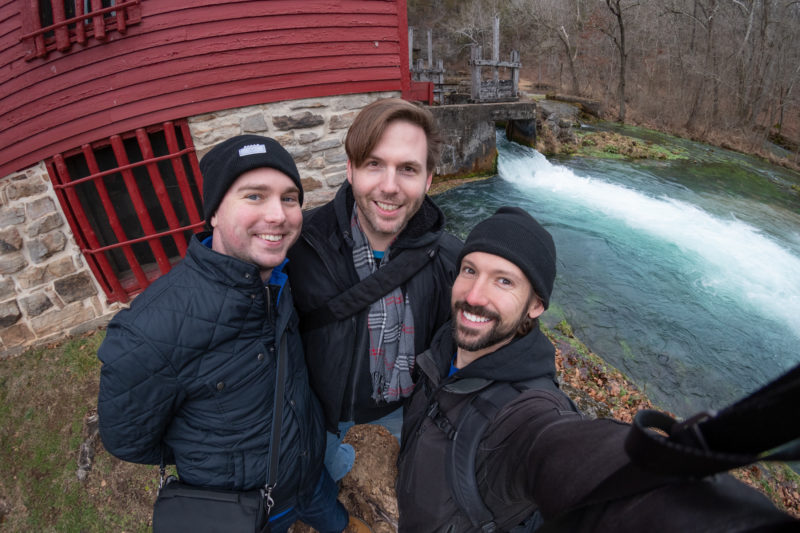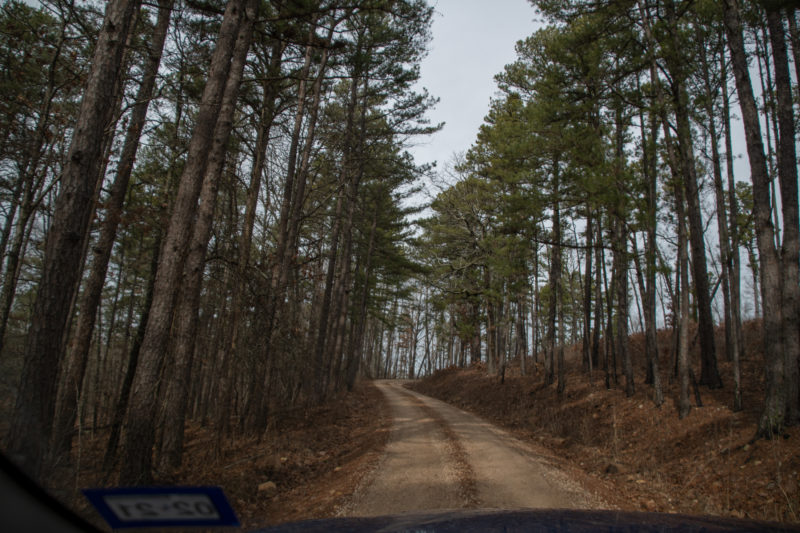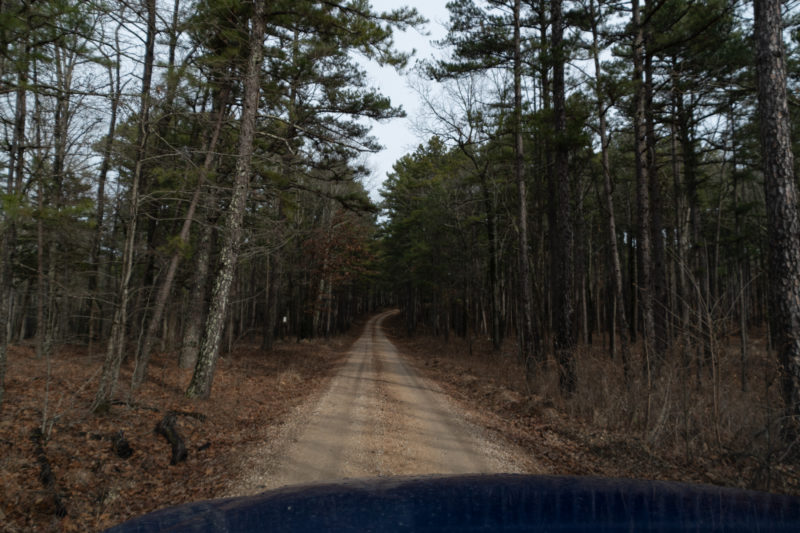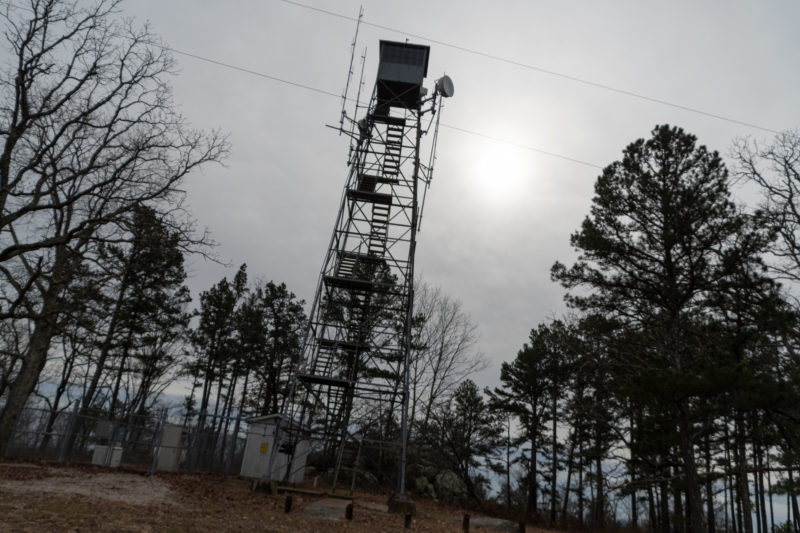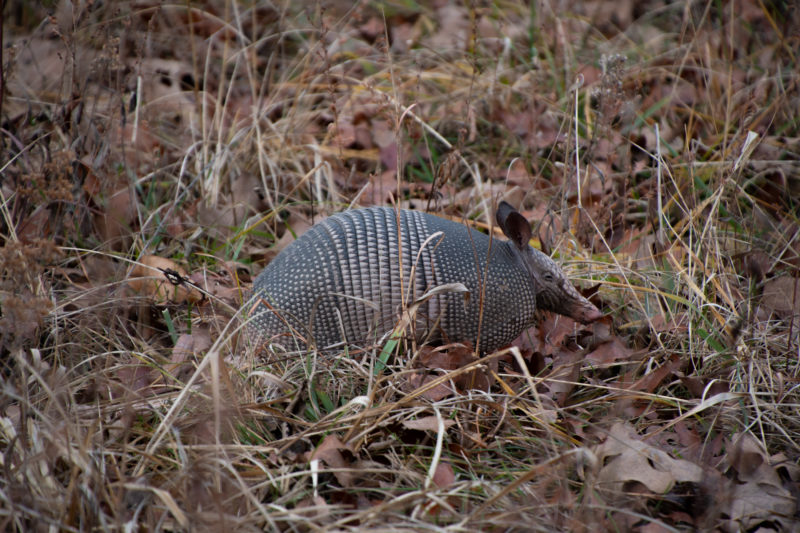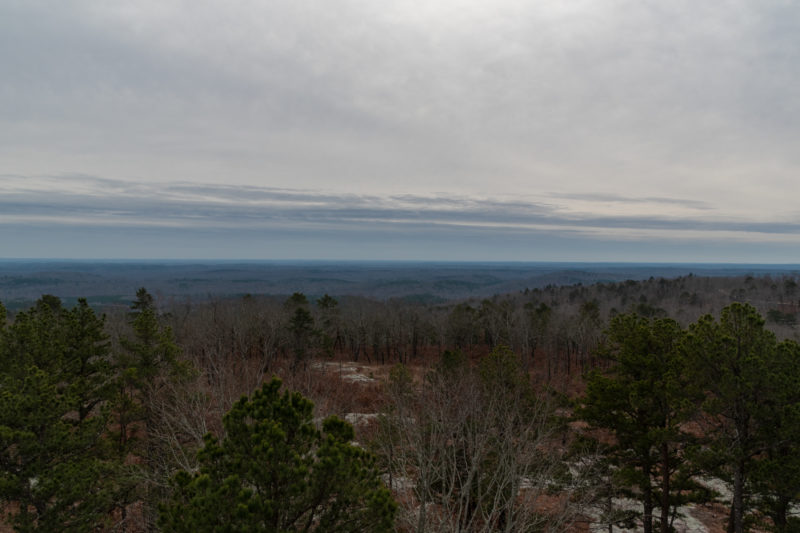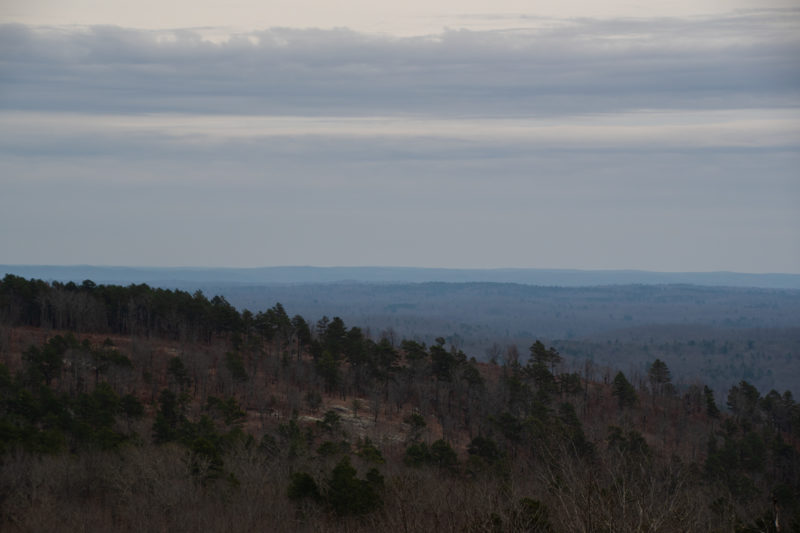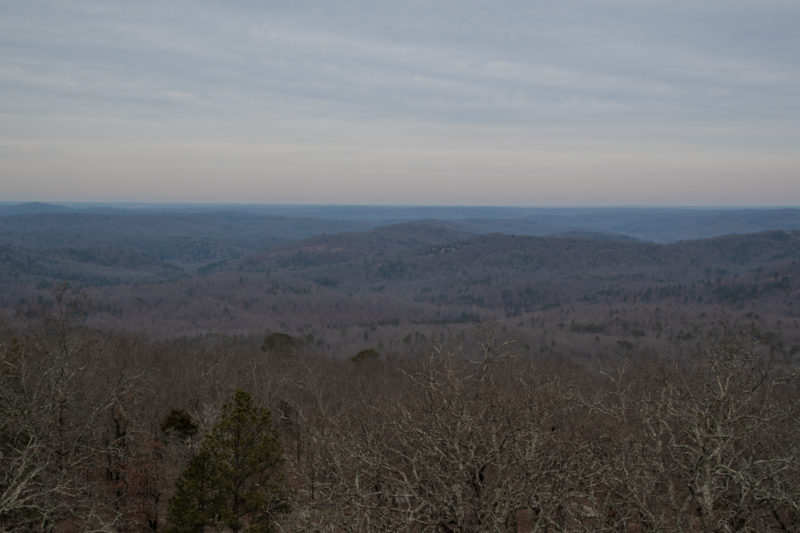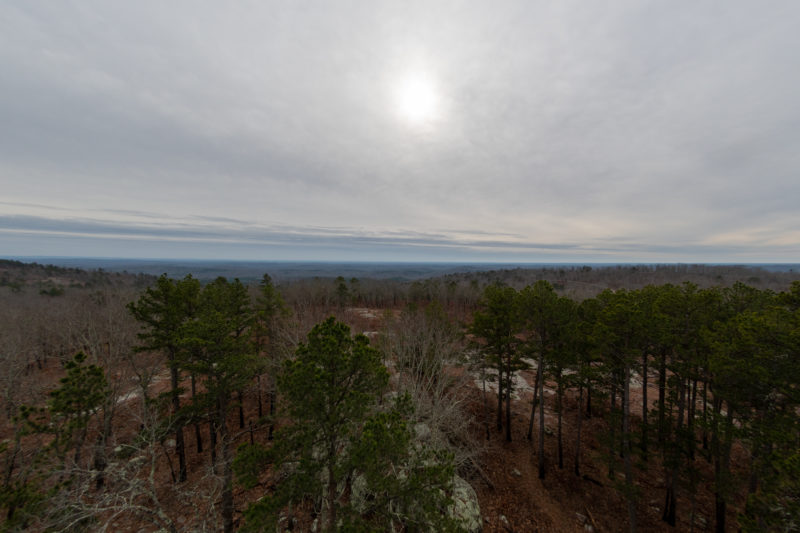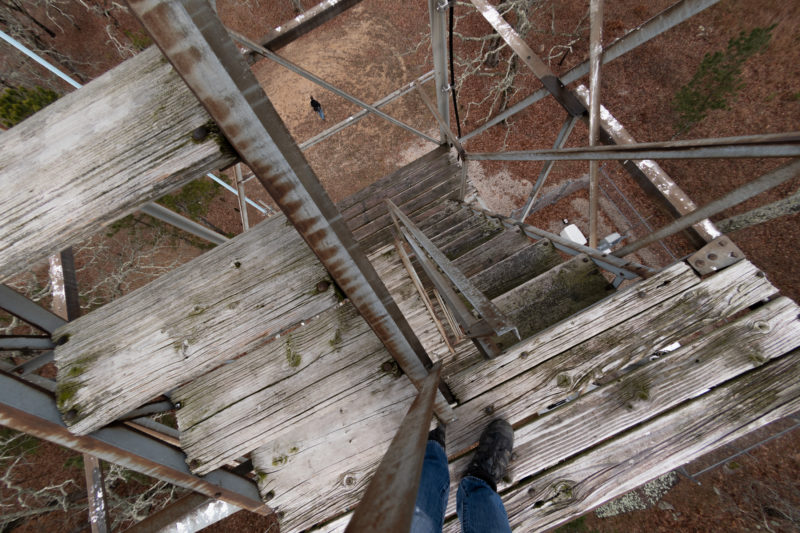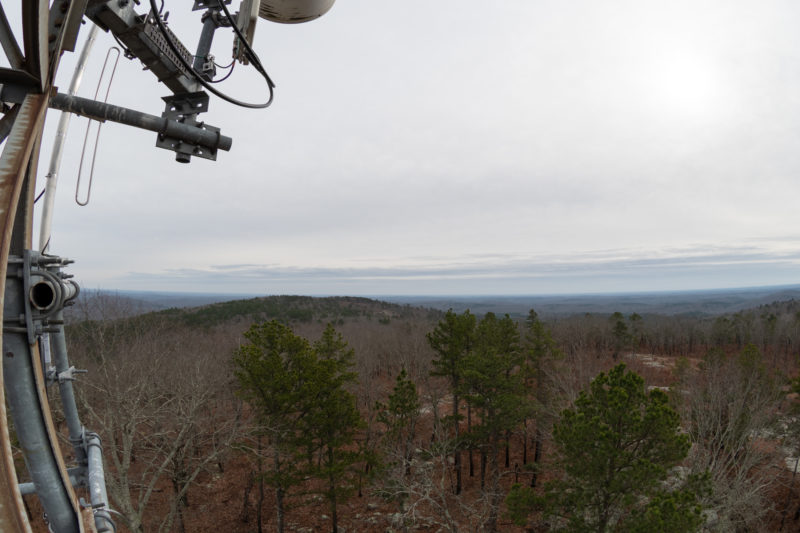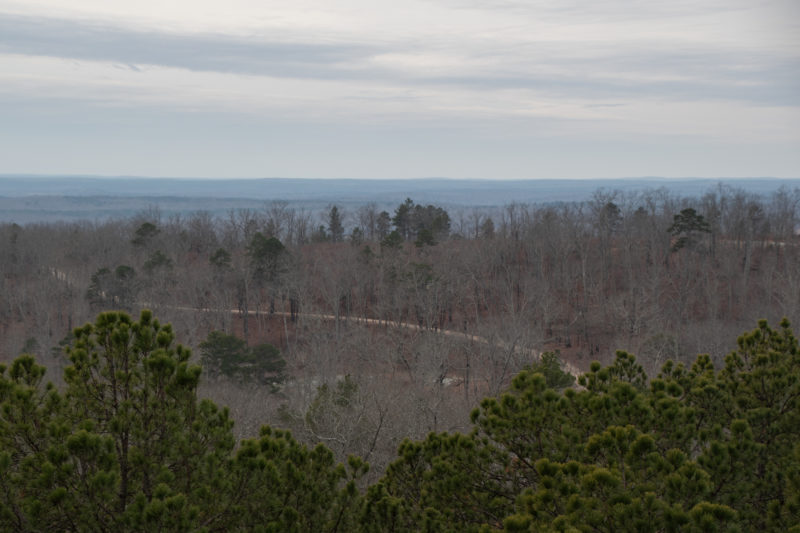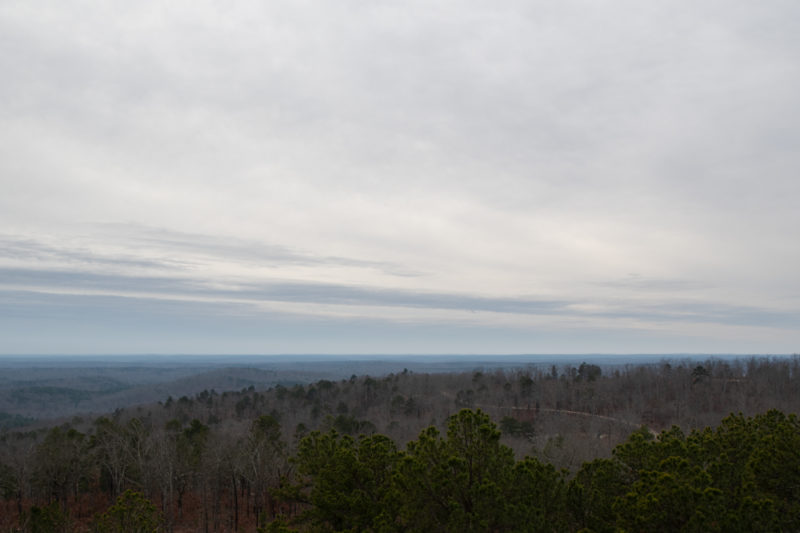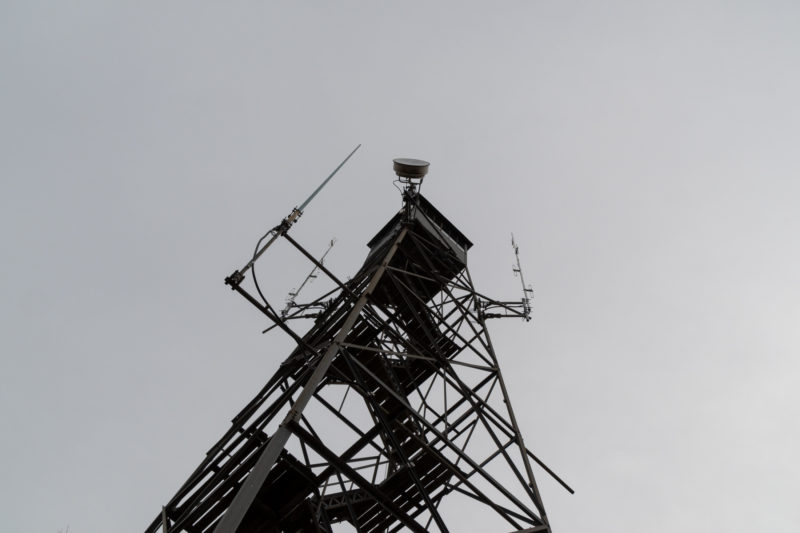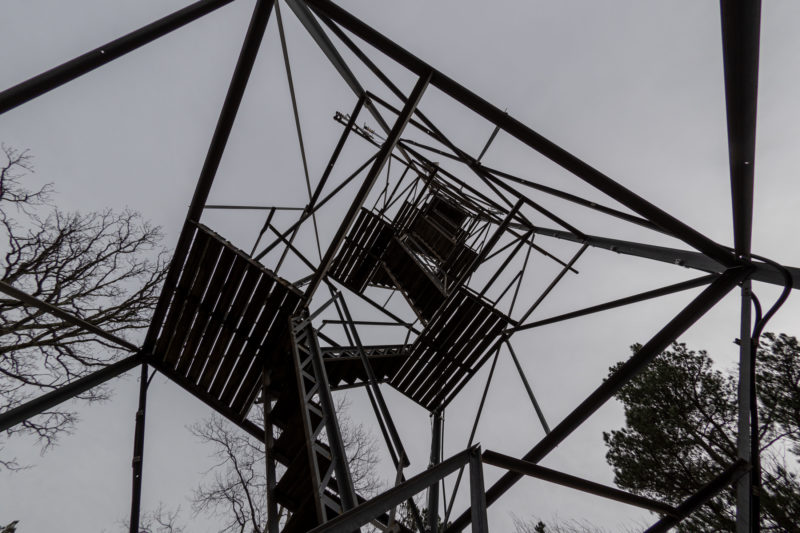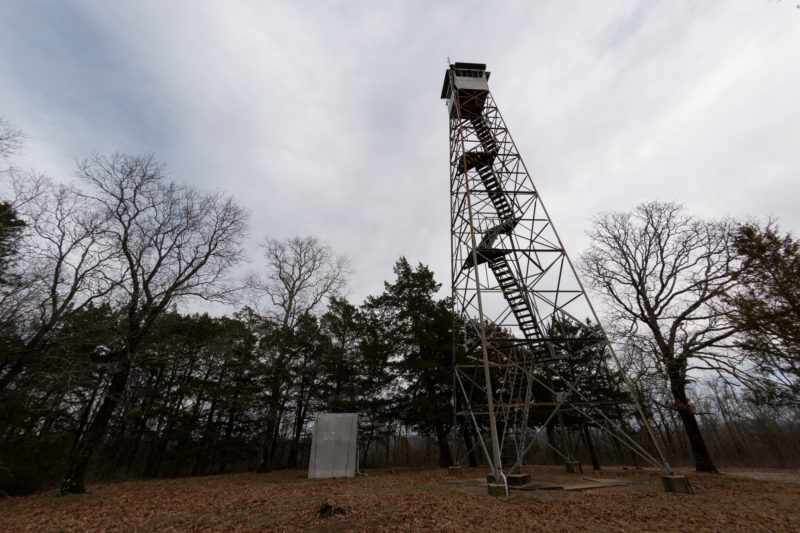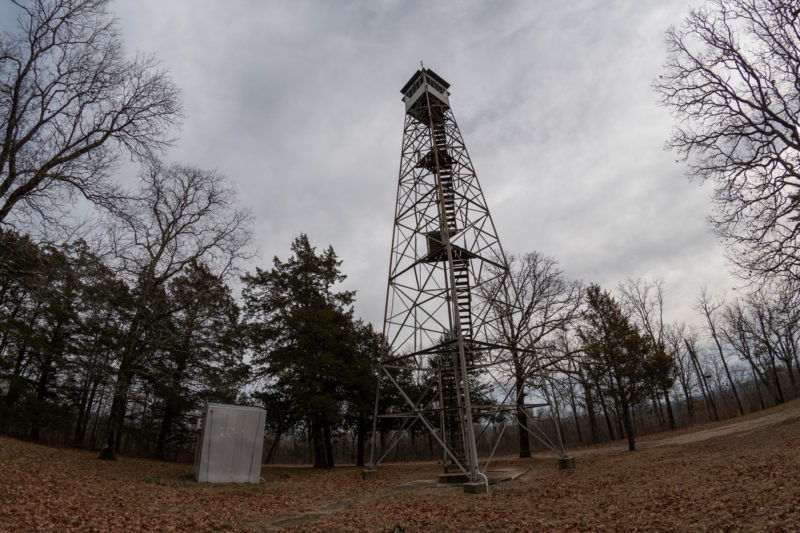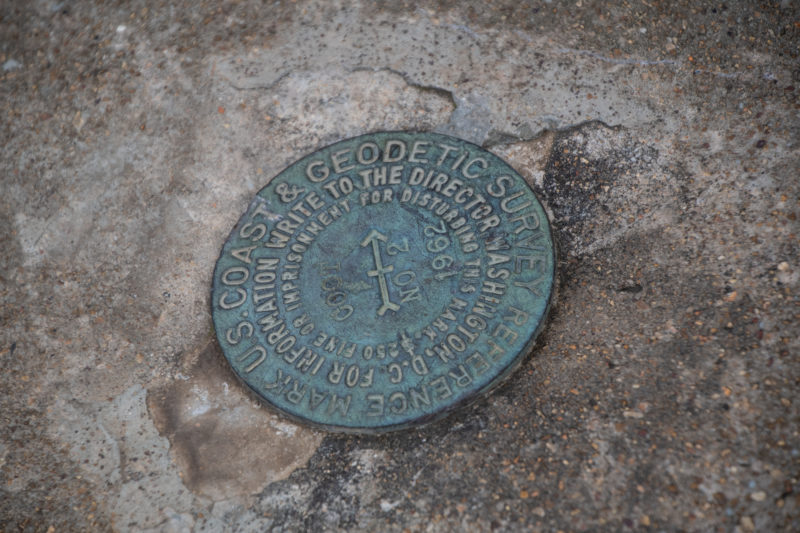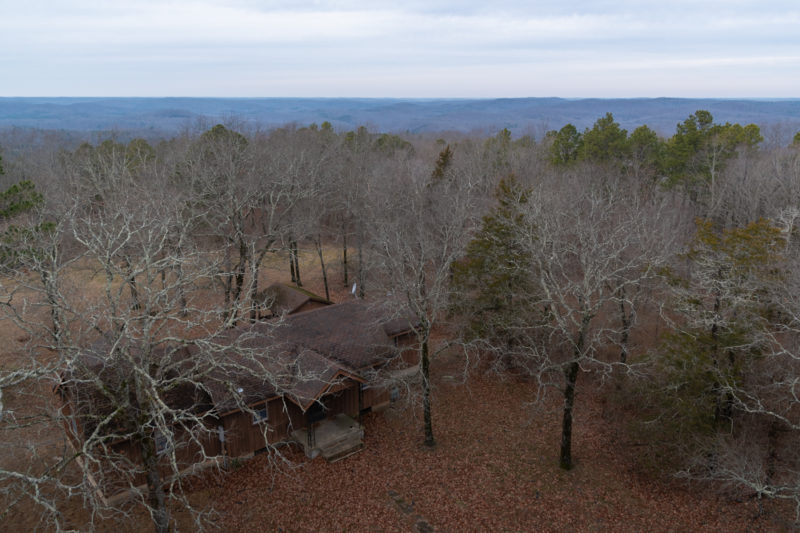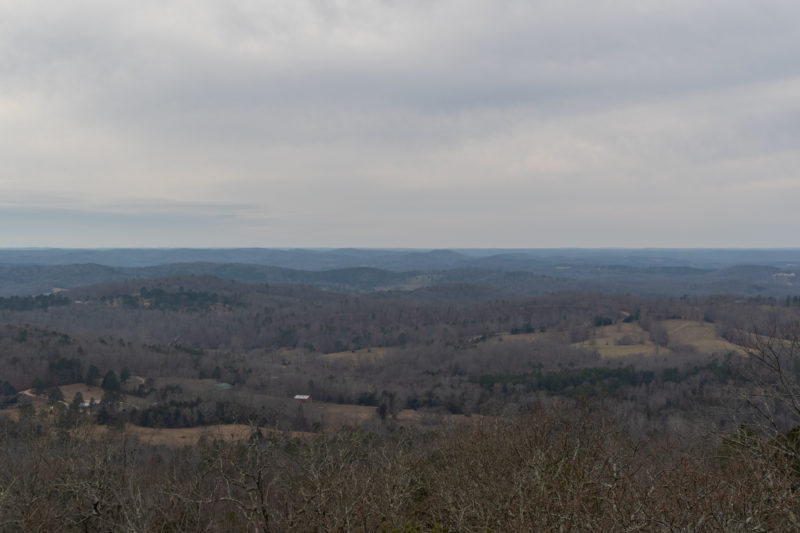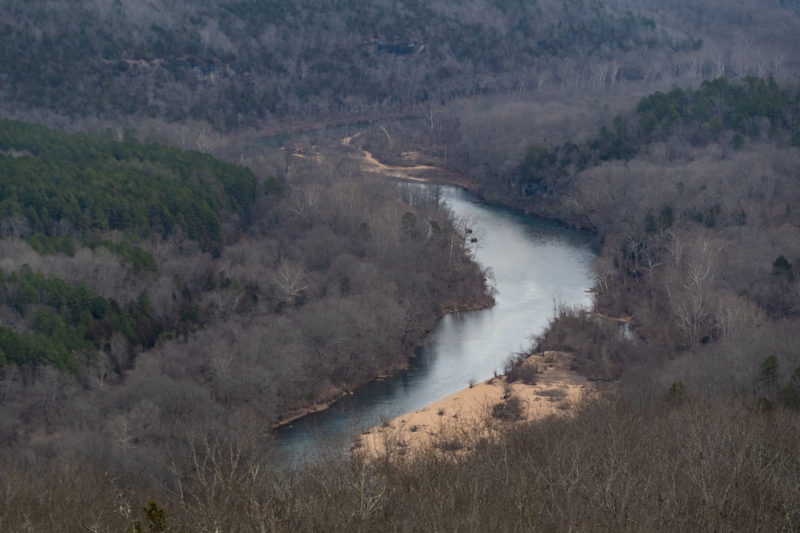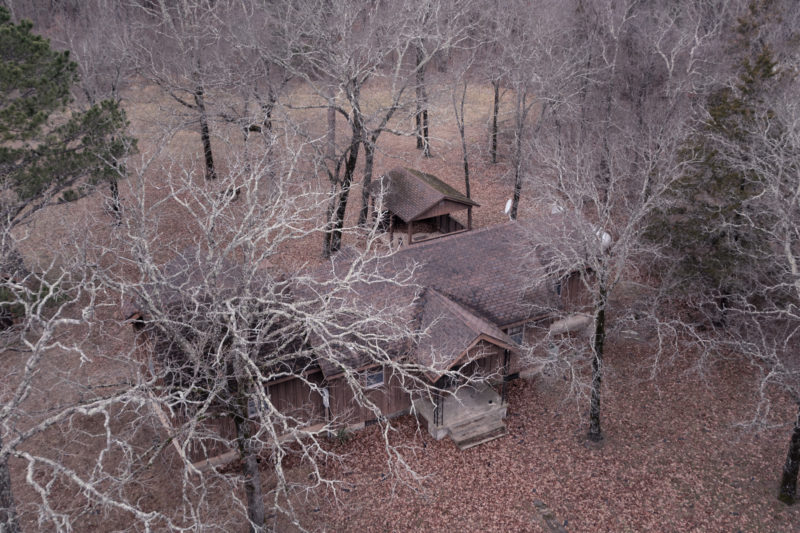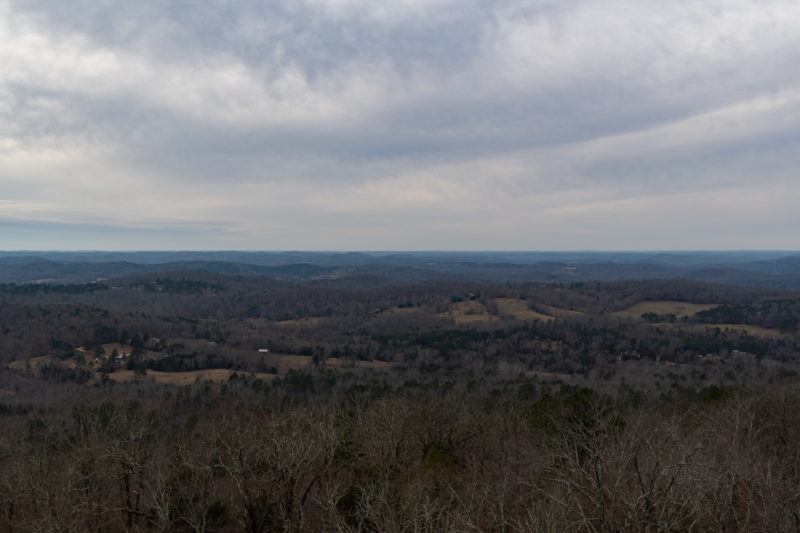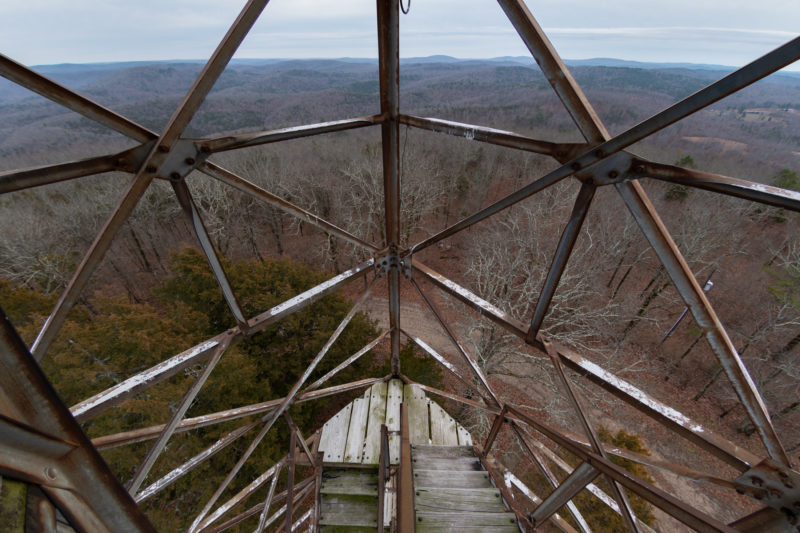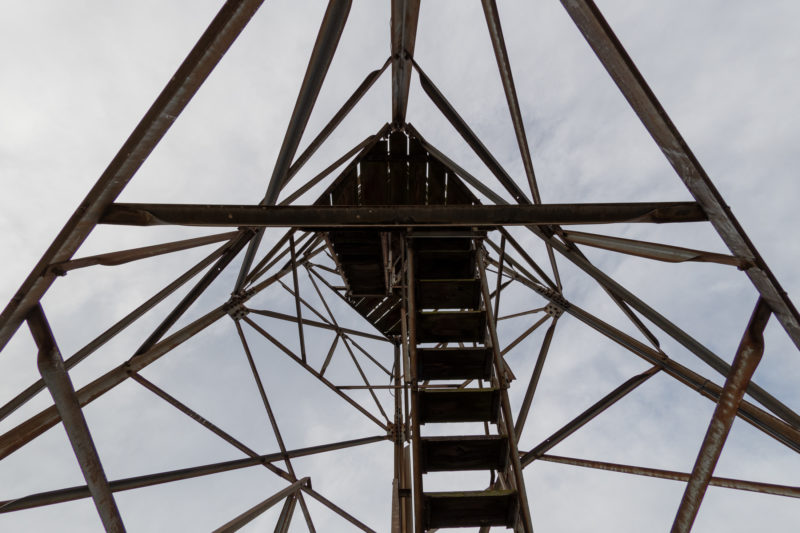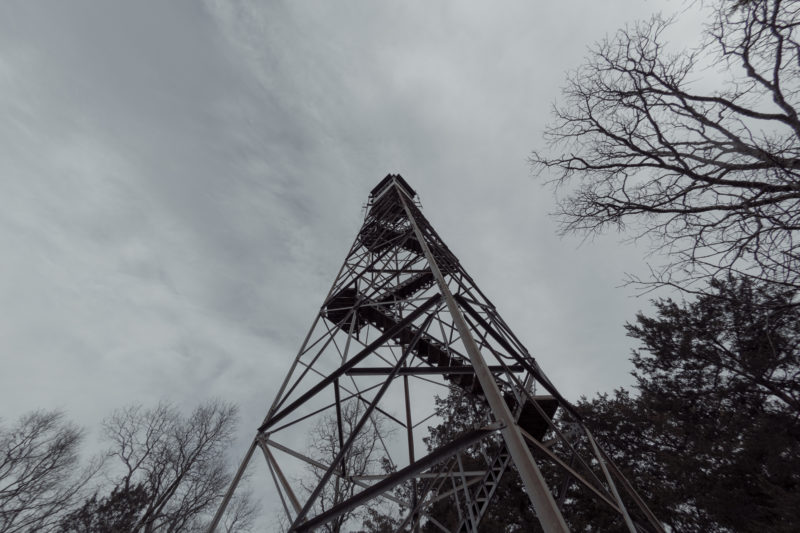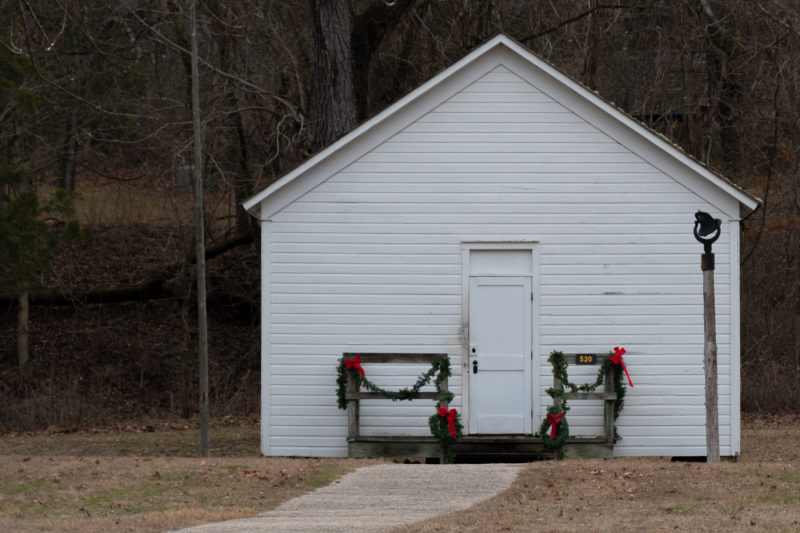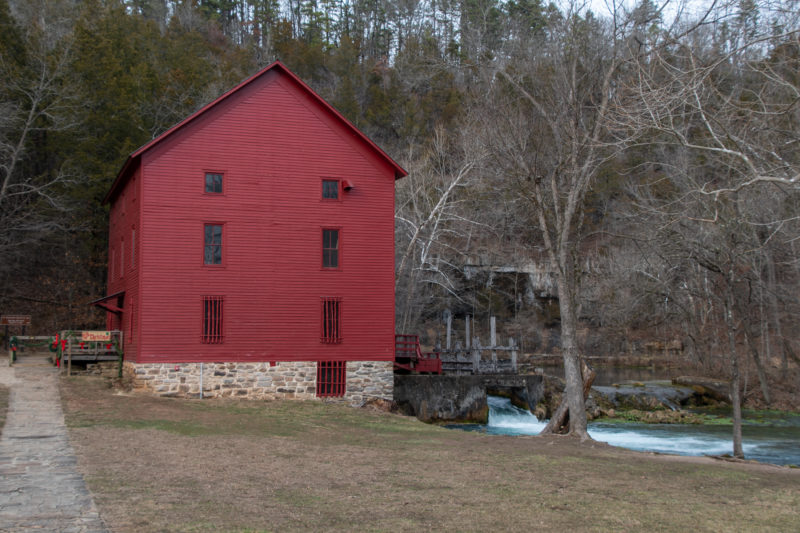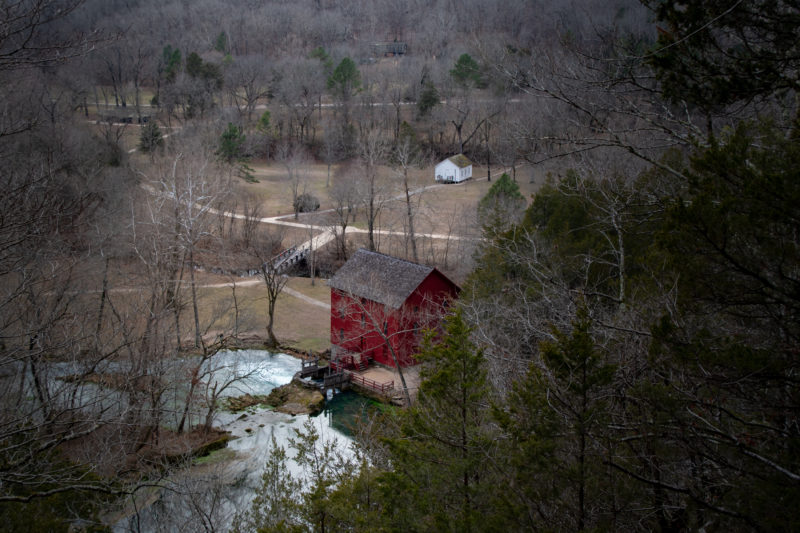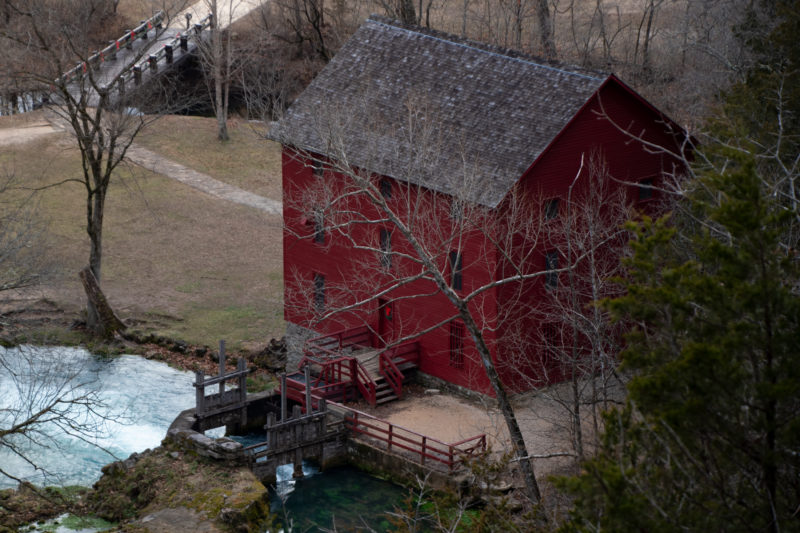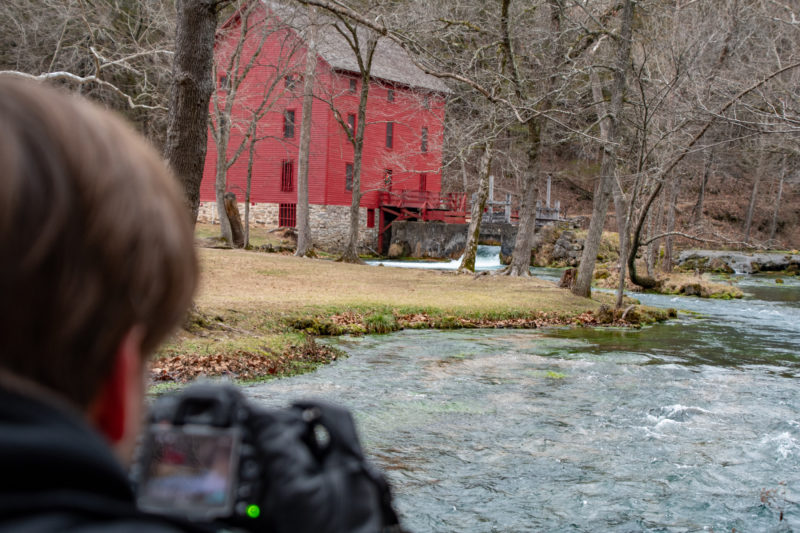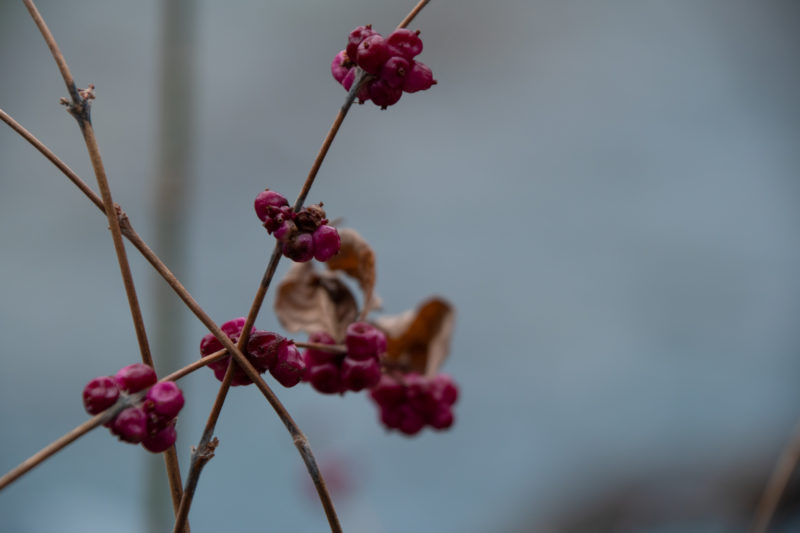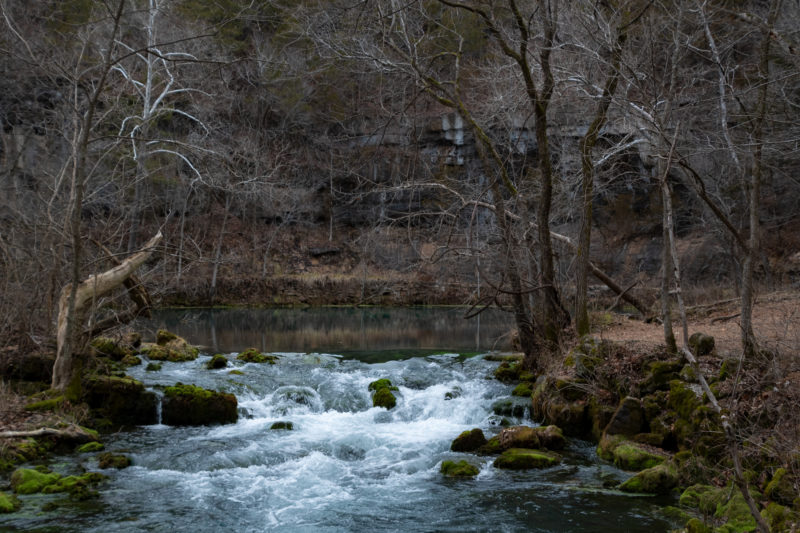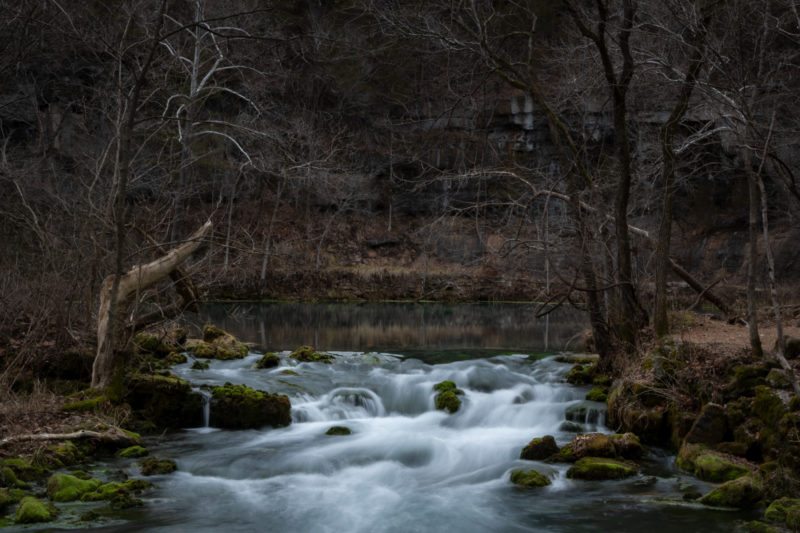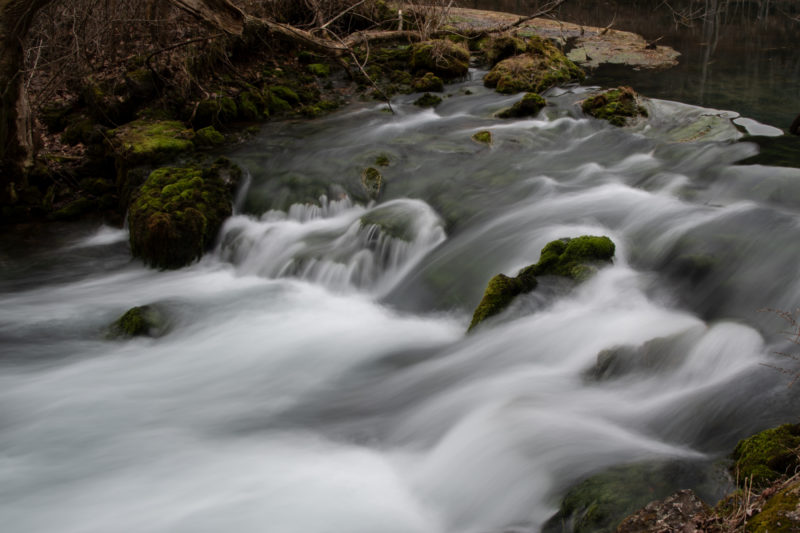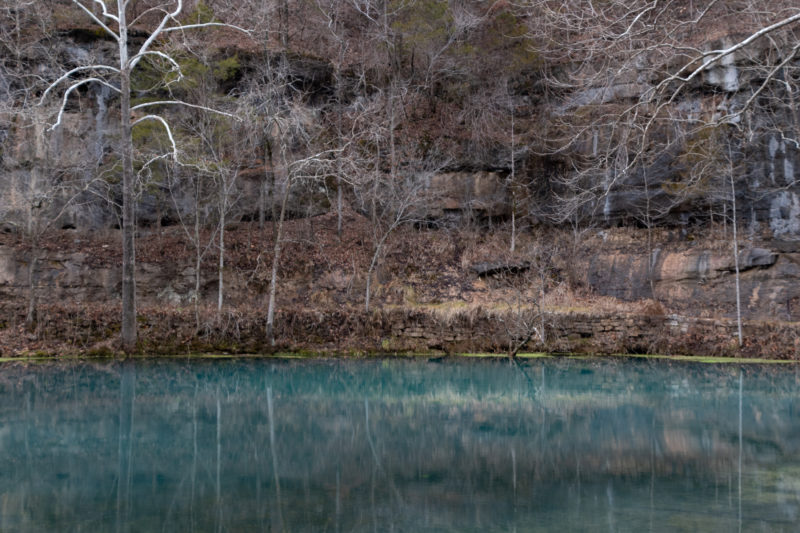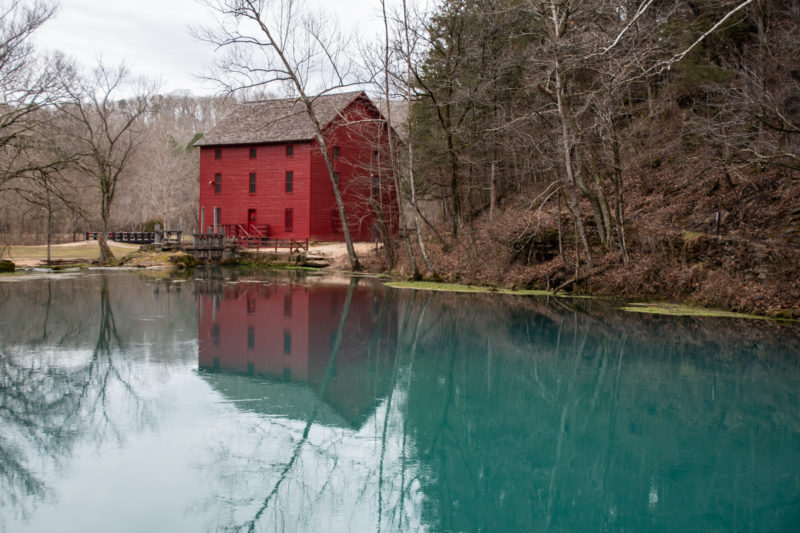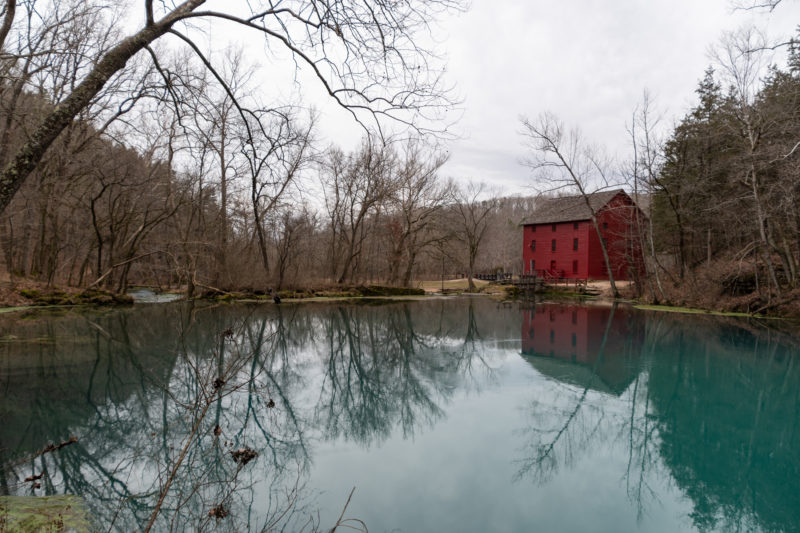We opted for a shorter day today given the need for prep time for our New Year’s feast. Having struck out in Arkansas, we set out to find two lookout towers on a map George found on the internet. That went well.
Stegall Mountain is the highest point in the Peck Ranch Conservation Area, a Missouri Department of Conservation park and wildlife refuge. The only critter we encountered was an armadillo that snuck up on me, but there were signs of deer, too. MDC also notes that wild elk roam the region. At the center of Stegall Mountain is an old lookout tower in good condition that has been fitted with some telecom equipment that we debated the possible purpose of while I was definitely not climbing the tower. I’m sure there might be a lovely view at the top. For legal purposes: I borrowed these pictures from someone else.
It was thirty-six degrees and windy, so we didn’t hang around too long.
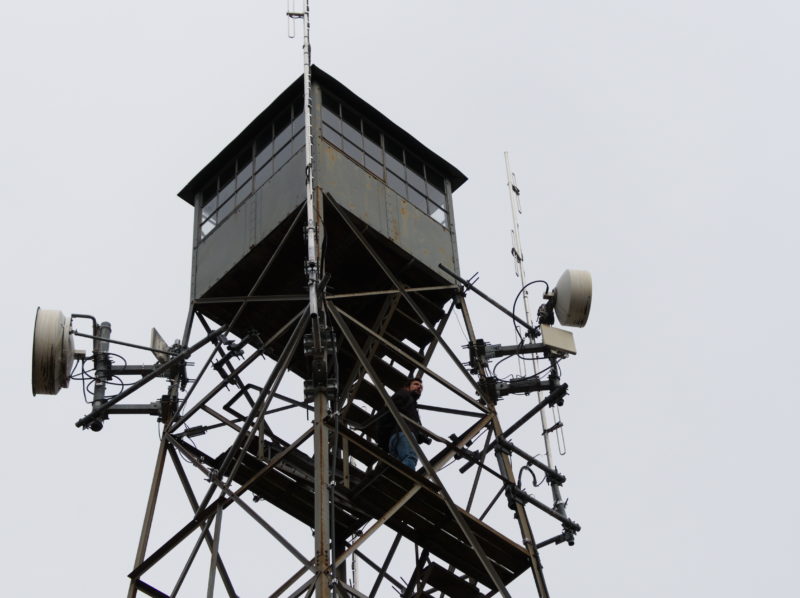
The next mountaintop on our tour was Coot Mountain. We knew less about this one, and there was a barrier across the road as we approached the map marker. Foolishly undeterred, we walked the rest of the way to see. There’s a residence on the property but it looked unoccupied — or at least, that’s what I’d hoped because I didn’t want to get shot at (the surrounding neighborhood looked somewhat unaccustomed to guests).
I have since found Coot Mountain and its lookout listed on a website with some construction history of the tower, indicating that the tower was built in the 1930s. The residence was added in the 40s, with renovations in the 60s and 70s. The whole 20-acre site is now owned by Missouri Conservation Commission. The website does not explain whether the residence is unoccupied or if I just got lucky, but the tower appears like it, too, is now primarily used as a lift for telecom equipment. (I should point out that my phone basically doesn’t work anywhere near here, so Verizon has no part in any of it, clearly.)
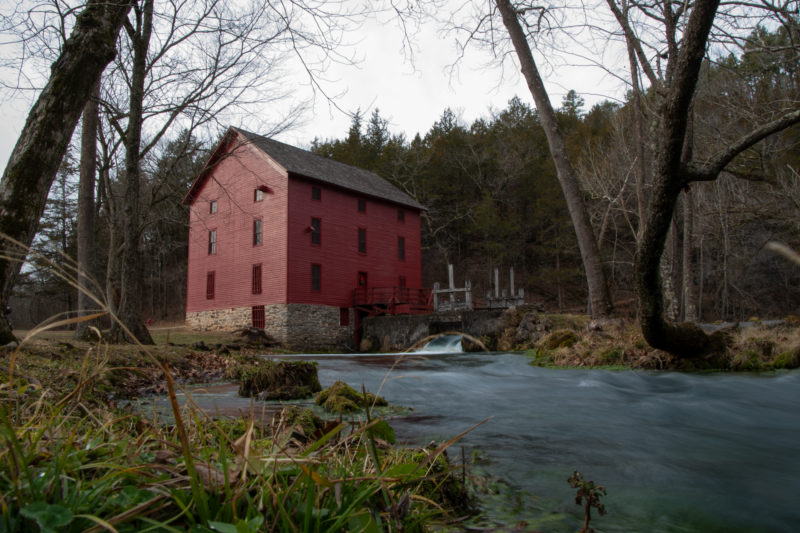
Our last stop was Alley Mill and Springs, a National Parks Service site in the Ozark National Scenic Riverways region.
Alley was home, farm, and school for people who lived here a century ago. Dances, baseball games, and roller skating were all part of Alley’s busier days. John Knotts purchased the 80 acre site in 1902 and diversified the enterprises to include a well-stocked store and blacksmith shop.
A mill was vital to community life, where grain was ground to provide the daily bread. The present building was constructed during 1893-1894 by George Washington McCaskill as a merchant mill. It was larger than most mills in the Jacks Fork area and replaced an earlier mill on this same site that was built by 1868. Originally unpainted, it was first painted white with green trim, then later the famous red color associated with Alley Mill today.
Alley Mill, National Parks Service
The mill was powered by a spring that pushes about 81 million gallons a day up through a brilliant blue pool that was absolutely mesmerizing. It reminded me a bit of Hamilton Pool back home, but even more vibrant and surrounded by lush dark moss that contrasted both the water and brilliantly painted building. Other buildings on the property included the old schoolhouse and blacksmith shop, both of seem to be currently closed.
The process of converting wheat into flour was lengthy and time-consuming. The farmer brought his grain, either wheat or corn, to the miller who made an agreement to either buy the grain or make a trade. Often he would take a “toll” or percentage of the grain in exchange for grinding. Since the water supply of Alley Spring was constant, it seemed to be an ideal place for a mill. Free water power provided energy for the machines; however, recurring floods made the operation only marginally successful. The Alley roller mill was designed to process wheat flour in an area where corn was the main crop. This marketing error presented another setback for mill owners.
(NPS continued)
We took a hike up to the overlook and poked around a while before heading back to Eminence for a New Year’s Eve booze run more groceries.
Headed back at the cabin, G&E worked ton preparing a steak and potatoes feast while those of us me whose primary specialty in the kitchen is staying out of it are am going through the day’s photos and feeling unusually contemplative.
On December 31st, 2019, we were huddled around a fire deep inside San Lorenzo Canyon under a crystal clear sky — two of us unemployed but rehired and looking forward to new jobs, with the excitement of a new year and new decade approaching, sure to bring many adventures, all while camped in the most epic place we could think of. Then a lot more than we could ever imagine happened. So in contrast, tonight, we welcome 2021 cautiously, sitting inside the most remote cabin we could find under a cloudy mountain mist — with the hope that 2021 will bring the light at the end of several tunnels, but grateful for our bounties of 2020 nonetheless, and with the knowledge that family and friends both near and far will be with us through whatever’s next.
